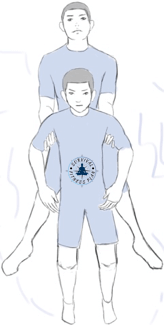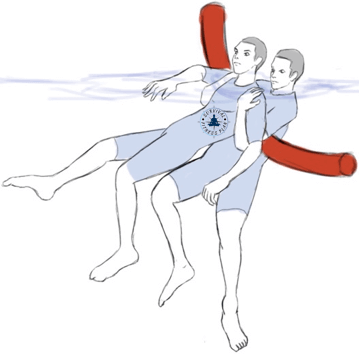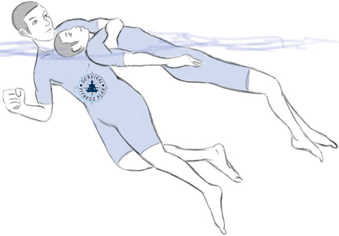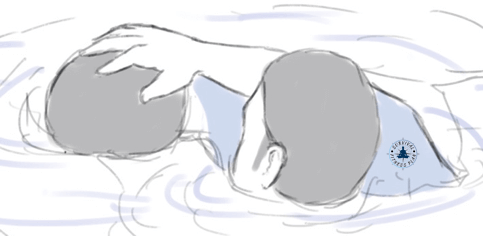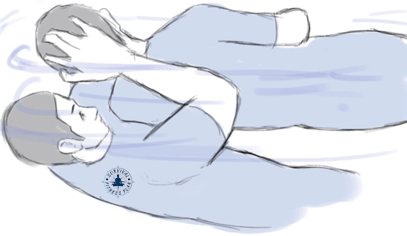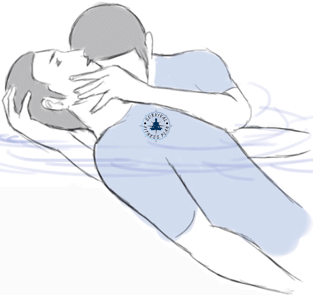Water-Based Water Rescue Techniques
Learn water-based water rescue techniques to save someone when drowning. Only use water-based rescues if land-based rescues are not possible. Like land-based rescues, water-based rescues have a preferred order of use. Here they are in that order.
GET YOUR FREE SWIM WORKOUTS AND WATER RESCUE SKILLS SCHEDULE
The information in this post is from the book “Swim Workouts and Water Rescue Skills” by Sam Fury.

Swim Workouts and Water Rescue Skills: Techniques to Swim Faster, Longer, and Safer (Survival Fitness Book 9)

Price Disclaimer
Water-Based Water Rescue Techniques
Wading Rescue
The wading rescue is good in shallow water no more than waist deep. Any more than that and it turns into a towing rescue. Also, the victim must be conscious.
Find a rescue aid and enter the water as close to the victim as you can while still keeping safe and out of his arms reach. If possible, keep hold of something on shore.
Instruct the victim to grab onto the aid and pull him to safety.
Boat Rescue
When there is a boat nearby and you know how to use it, you can use the boat rescue. As a general rule, avoid bringing the victim on board the boat.
For an unconscious victim, it is best to have a second rescuer hold his head above water as you drag him to safety. A solo rescuer will have to bring him on board. Be careful not to capsize the boat as you do so.
Throw a tow rope/float to the conscious victim. If he is calm he could even hold onto the boat, although this is risky with a panicking victim.
There are many situations where you will have to bring the victim on board. For example, if there is something dangerous in the water or when the distance to land is very far. Remember to be flexible.
Swim with an Aid
This is same as the wading rescue except you swim the rescue aid to the victim instead of wading. It is useful for conscious victims in deeper waters.
Swimming while holding an aid requires prior practice. Also, practice taking off your clothes while in the water. You can use them as an improvised rescue aid if you are already in the water when someone needs help.
Like the wading rescue, be sure to stay out of arms reach from the victim. Using the aid is much safer. Help drag him to safety and make sure you are stable before helping him onto land.
Towing
Towing is when you have to grab the victim and bring him to safety. This may be for an unconscious victim, because you have no aid, or because the person is too panicked to grab your aid. The latter is the most dangerous as they may drag you under the water.
There are several types of rescue tows and the one you use will depend on the specific scenario.
Whenever you approach any victim for a tow, stop a few meters back from him first. Re-access the situation and calm the patient from a safe distance. Assuming he is conscious, tell him what you plan to do and that he should stay calm throughout the process. Continue to reassure him until he is safe on shore.
Armpit Tow
The armpit tow is useful with a co-operative or unconscious victim. It allows you to approach from behind which is the safest position for you.
There are two types of armpit tows, i.e., the single and double. The one you use depends on what you prefer and the situation at hand.
To do an armpit tow you must first level the victim off. This is so you can keep his face out of the water and his airway clear. It also makes the victim horizontal to the water, making it easier for you to take him to safety.
Single Armpit Tow
Approach the victim from behind and grab his armpit with your same side hand (e.g., right armpit with right hand).
Place your elbow of your other arm in the center of his back. Pull with your hand as you push with your elbow. At the same time use a scissor kick to level him out, face up. Your other hand can assist in the process if needed.
While keeping hold of his armpit start swimming so that you will drag him in the direction you want to go. Sidestroke works well. Allow your arm to extend until you start to pull him.
Double Armpit Tow
When the victim is larger than you the double-armpit tow may be easier to use, especially to level him off.
Approach the victim from behind and grab both his armpits. Grab his right armpit with your right hand and his left armpit with your left hand.
Place both your elbows on his back and pull with your hands as you push with your elbows. As you do this, use an inverted breaststroke (like in survival backstroke) to help pull him flat on his back. He is now leveled.
Continue to kick until your arms lock straight and you start to pull him. You will need to use a continuous and strong kick to keep your victim’s face out of the water.
LEARN HOW TO DO SURVIVAL BACKSTROKE
Using the double-armpit tow long distance is hard since you have no arms to assist with swimming. A good idea is to start with the double-armpit tow and then switch to the single armpit tow once you have momentum.
You can make the double-armpit tow easier with a flotation aid. Place any long, thin, buoyant object between you and your victim and then tow him as normal. A pool noodle or rolled up sleeping mat work well. If possible, swim up with it in place, e.g., across your chest and under your armpits.
When using an aid in this manner you may find it more difficult to level the victim. You will need to experiment to see what works best for you. You may even choose to skip the leveling.
Once you have some momentum you may be able to free up one of your hands to help you swim.
Every flotation device will act a little different. Experiment with various options, especially with things you are likely to have.
Cross Chest Carry
Use the cross chest carry when rescuing a victim through heavy surf. It is more tiring than other rescues.
Approach the victim from behind and level him off (described in armpit tows). Encircle his chest with one arm. You can use your other hand on his side to help position him into a secure position.
Once you get a good grip, use sidestroke to swim him to safety. Your hip on his back helps to support him.
If the victim struggles you can either tighten your grip or use a defense technique (next chapter).
Vice Grip Rollover and Tow
When you suspect your victim has a spinal injury, use the vice grip rollover and tow.
The vice grip rollover and tow allows you to turn a faced down victim over and tow him while protecting his spine. You can also provide rescue breaths to an unconscious victim while towing him. You may wish to do this if the distance to shore is further than you are willing to wait to perform CPR.
To do the vice grip rollover you need to be in water deep enough to allow you to submerge the victim. Grip his jaw with one hand and align your fore-arm along his sternum.
Place your other hand on the back of the victim’s head and align your forearm along his spine. Squeeze your elbows together. Create a “vice” on his head, neck, and spine between your forearms.
LEARN WHITE WATER SWIMMING SKILLS
Move forward to level him off. While keeping him as level and stable as you can, roll under him to turn him over.
Keep this vice grip and use a scissor kick to swim.
Giving rescue breaths is challenging but you can do it if the victim is not too big for you. Change your hand on his chin to a pistol grip and lean over to give the breaths.
Note: Giving rescue breaths will compromise the spinal support.
GET YOUR FREE SWIM WORKOUTS AND WATER RESCUE SKILLS TRAINING SCHEDULE

Swim Workouts and Water Rescue Skills: Techniques to Swim Faster, Longer, and Safer (Survival Fitness Book 9)

Price Disclaimer
Photo Credit: Airman 1st Class Tryphena Mayhugh.
Did you find this article on water-based water rescue techniques useful? If so, please share it with your friends.
The post Water-Based Water Rescue Techniques appeared first on Survival Fitness Plan.





